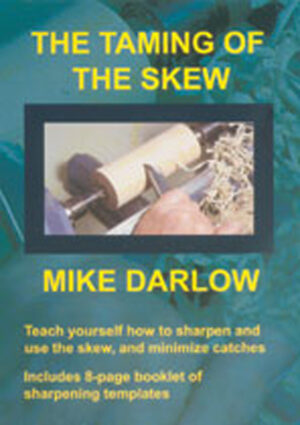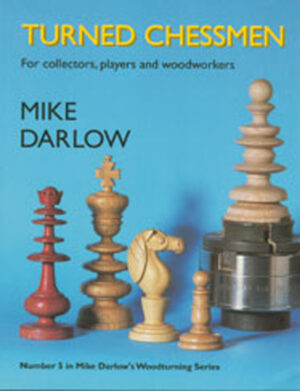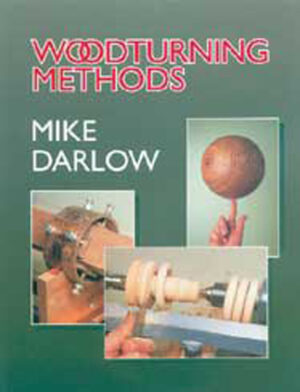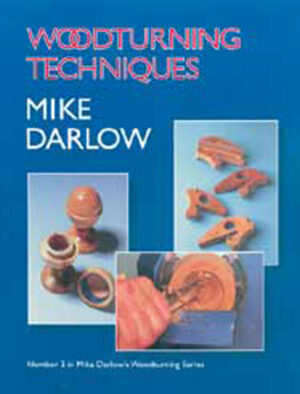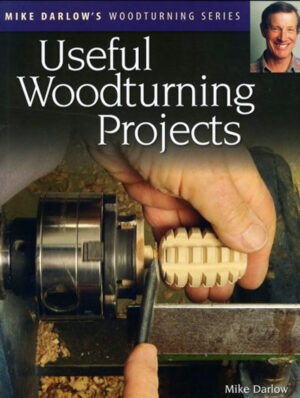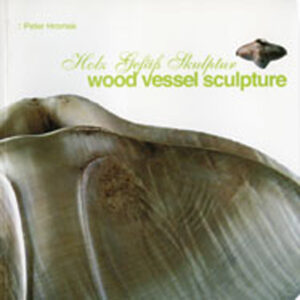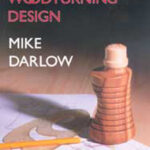WOODTURNING DESIGN
$35.00
by Mike Darlow
Softcover
215 x 280mm
264pp
Published by The Melaleuca Press, Lot 17 Wilsons Lane, Exeter
ISBN 0-9589609-5-X
As reviewed in The Australian Woodworker Issue 110
by guest reviewer Ernie Newman
Scholarly and intellectual – Yes. Impractical and airy fairy – No.
Every two years since 1997 I have had the pleasure of exploring a new book by Mike Darlow. It is a terrific series and this book is no exception
Some gurus on woodturning design offer a gallery of turnings, a dash of waffly encouragement and a few simple rules which supposedly guarantee success. Mike Darlow, however, has worked hard at his subject and invites us to join him by stating that ‘the secret of good design is work’.
He begins by discussing the history of design from ancient Greece to medieval Europe to 21st century North America and Australia, frequently exploring how the fields of philosophy, architecture, psychology and economics have impacted on design and woodturning.
Many readers may flick through the book looking at the diagrams, photos and captions and feel the purchase price of $70 is quite justified. For the serious student of woodturning design, there are also scads of useful ideas and concepts.
One of these benefits, which could be considered one of the book’s more practical offerings, is where Darlow shows how items such as boxes and lamp stands can be improved dramatically by minor alterations to proportions, shapes and detail – you can see an example of this in the extract from the book in Issue #108 of this magazine.
Darlow has also included 540 colour illustrations and countless mouldings, curves, surface treatments and tips on design including a page and a half on the humble fillet, which turns out to be more complex than it appears.
There are hundreds of challenging ideas about design. The ‘golden mean’ is commonly invoked as the ultimate in good proportion. However, Darlow debunks this idea over several enjoyable and persuasive pages.
I was disappointed that the book neglected the human form as a basis for turned designs. It would have been entertaining to see him either endorse or attack this approach.
Darlow’s love of classical design is conspicuous in everything from eggcups to massive architectural columns but he also includes beautiful photographs of many contemporary, abstract and metaphorical pieces from famous turners – and some talented unknowns.
If you want to broaden your knowledge, think about design, sketch, experiment and try again, then this book is a rich resource.
Photos: Colour
Contents
The Design Process
An Introduction to Design
Endnotes
Perception
How Our Minds Perceive
Conclusion
Endnotes
A History of Aesthetics
The Ancient and Medieval Period
The Renaissance
The Modern Period
Summary
Endnotes
Design Concepts and Issues
Modern Aesthetic Meanings
Concepts Which Influence Our Perceptions
Concepts Concerned with the Production of Turnings
Moral Concepts
Endnotes
Stage 1 Design
Inception
Feasibility
Intentions
Restraints
Incubation and Illumination
The Preliminary Design
The Initial Design Proposal
Endnotes
Ornament and Moldings
Ornament
Moldings
Endnotes
The Detailed Design of Form
Design Tools
Wholistic Detailed Design
Design-by-Parts
Designing for Appropriateness
Endnotes
Decoration
Color
Pattern
Texture
Gloss Level
Endnotes
Designing Spindles
Intentions
Show-and-Tell
Box Design
Intentions
Influences on Form
Guidelines
Lids
Lid/Base Proportions
Show-and-Tell
Endnotes
Vessel Design
Stage I Design
Detailed Design
Columns
Columns in Ancient Egypt
Columns in the Ancient Near East
Ancient Greek Columns
Roman Columns
Romanesque and Gothic Columns
The Formalization of the Orders
Columns After the Renaissance
Asian Columns
Designing Classical Columns
The Manufacture of Columns
Balusters
Endnotes
Where Next?
Where Next for Woodturning’?
Where Next for This Series
Index

